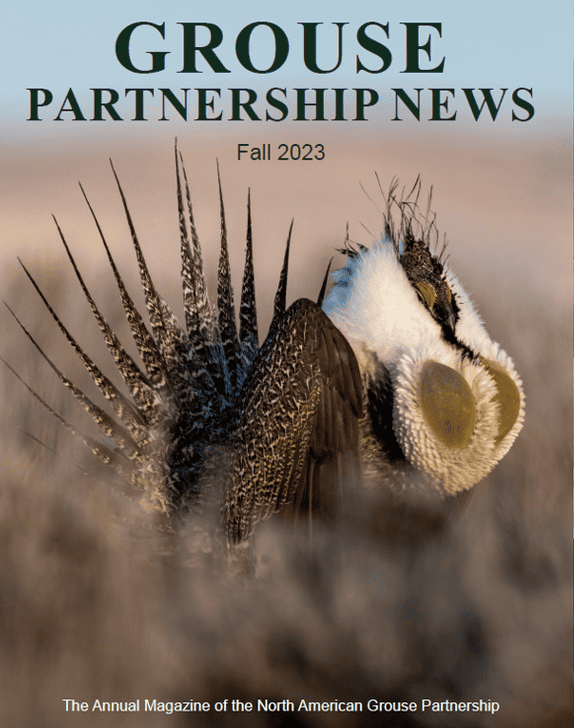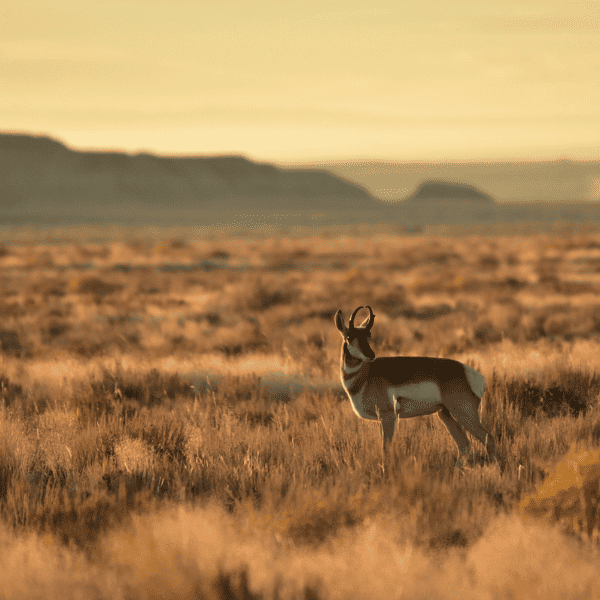
Transforming Rangeland In Kansas’ Gyp Hills
Working together with conservation partners, a landowner and livestock producer restore prairie grazing lands in the southern Great Plains.
Western Working Lands Snapshot | Western Meadowlarks
November 19, 2019
Nature’s Engineers: How Beavers Boost Streamflows and Restore Habitat
January 13, 2020
Cattle roam the Gyp Hills of Kansas. Photo: Brianna Randall
Working together with conservation partners, a landowner and livestock producer restore prairie grazing lands in the southern Great Plains.
By: Brianna Randall
Editor’s note: This story has been adapted. This condensed version contains more photos than the original, which was first published in BEEF Magazine. Find the full BEEF Magazine story here.
Red Angus cows wander amongst the waves of green mixed-grass prairie, matching the color of the Kansas hills they roam. Known as the “Gyp Hills”, these red clay-coated buttes are shot through with lines of white gypsum, a crumbly mineral that makes drywall and chalk.
Here in the southern Great Plains, landowner Max Nichols is partnering with ranch manager Russell Blew to transform the range. They’ve put in place a host of conservation practices to restore the health of prairie grasslands, as well as boost agricultural operations on 11,000 acres near Medicine Lodge, Kansas.
“My goal is to return it to the way I remember it,” says Nichols. He’s referring to eastern recedar trees which have moved onto the prairie and now cover more than 1/3 of the ranch.
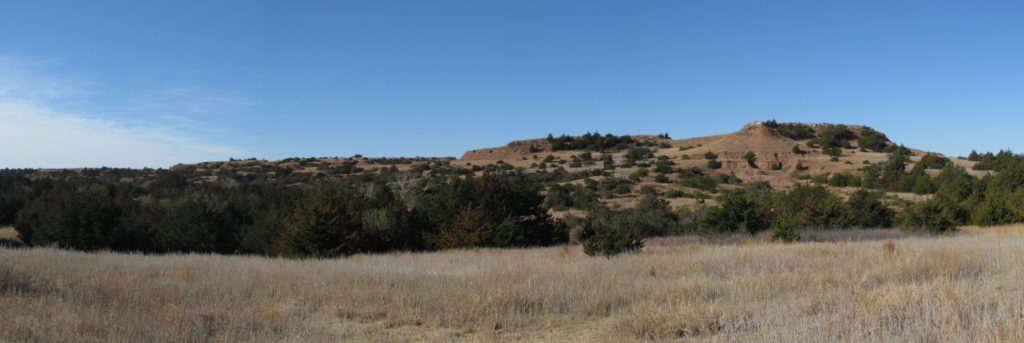
This image shows how eastern redcedar trees had invaded the prairie. Photo: Aron Flanders, USFWS

This image shows the ranch after encroaching redcedar trees were removed and impacted by fire. Photo: Aron Flanders, USFWS
After a few years working on his own to restore his land in the Gyp Hills, Nichols found the Blew brothers who he says are “top-notch range managers and conservationists.”
“Max shares our idea of sustainable range management,” agrees Russell Blew, who began running cattle on the ranch in 2012.
Blew and his brother, who collectively own the Blew Partnership, were selected as 2019 regional finalists for the National Cattlemen’s Beef Association Environmental Stewardship Award Program due in large part to the impressive conservation gains made on Nichols’ Gyp Hills ranch.
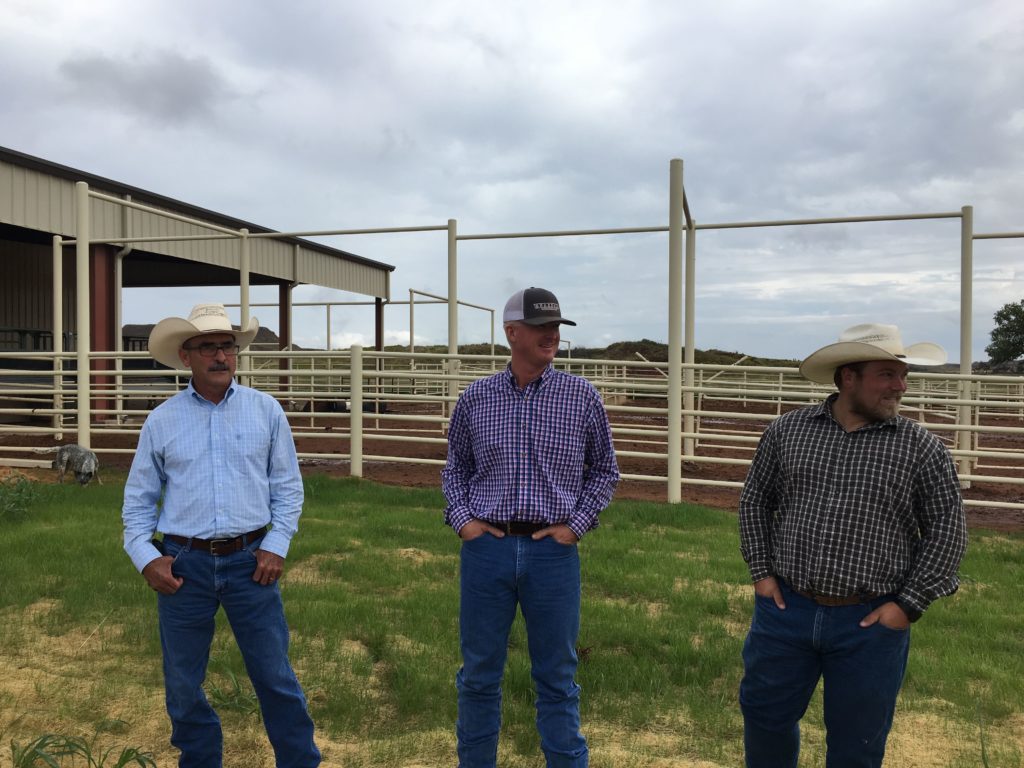
From left to right, Carl Jarboe, NRCS; Russell Blew; and Lody Black, NRCS talk while on the Nichols Ranch in KS. Photo Brianna Randall
Over the past decade, Nichols has invested millions of dollars in conservation efforts on his land that make it more productive for livestock and for wildlife. The improvements include installing 30 miles of new fences, five new water delivery systems, and eradicating redcedar on hundreds of acres. While he has footed the bill for much of that, partnering with the USDA-NRCS and other organizations like the Fish and Wildlife Service has helped leverage his investments into more on-the-ground conservation work.
I’m often leery of government help. But the NRCS has done a good job with the water projects, and the people have been an enormous help engineering it. I’m really happy with how it’s turned out. ~Max Nichols.
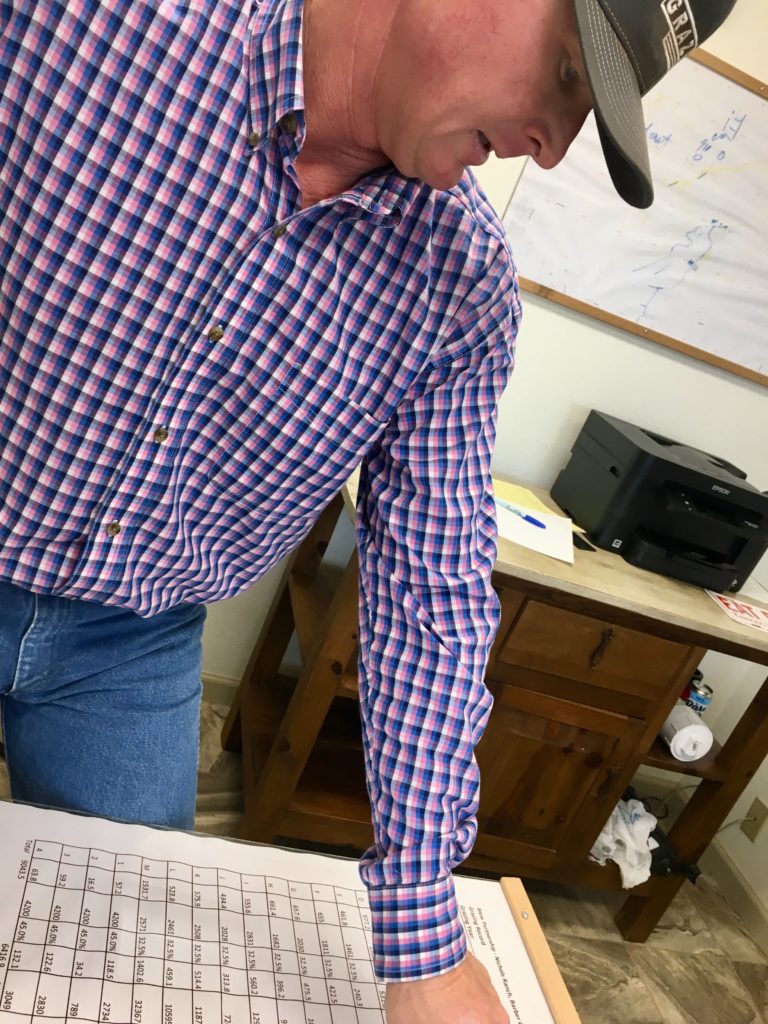
Blew shows off the grazing management plan developed in partnership with the USDA-NRCS. Blew now helps manage several cost-shared projects through NRCS Working Lands for Wildlife as well as the Kansas Partners for Fish & Wildlife Program and Kansas Grazing Lands Coalition, all geared toward boosting the ranch’s bottom line as well as improving range health. Photo Brianna Randall
Fire Can Help Heal Rangeland
Historically, the Great Plains had very few trees except near creeks or wet draws. That’s because the grasslands used to burn every few years, keeping woody species at bay. In contrast, Nichols’ Gyp Hills ranch hadn’t burned in 50 years due to fire suppression efforts, allowing eastern recedar to take over once-productive prairie grazing lands.

Prescribed fire is a key strategy in restoring conifer-dominated rangeland and in keeping uninvaded areas free from encroaching trees. Photo: Brianna Randall
“Wildfire accomplished in one day what it would have taken us 20 years to do,” says Blew of the Anderson Creek Wildfire that burned 99% of the Nichols’ Ranch in 2016.

This image highlights how both wild and prescribed fire can help remove redcedar trees and restore native perennial grasses and forbs. Photo: Aron Flanders, USFWS
“This is a flagship project in the area,” says Aron Flanders of the USFWS Partners for Fish and Wildlife Program, who works with Blew on conservation projects. “We’ve led several tours to show other ranchers and community members the benefits of conservation practices.”
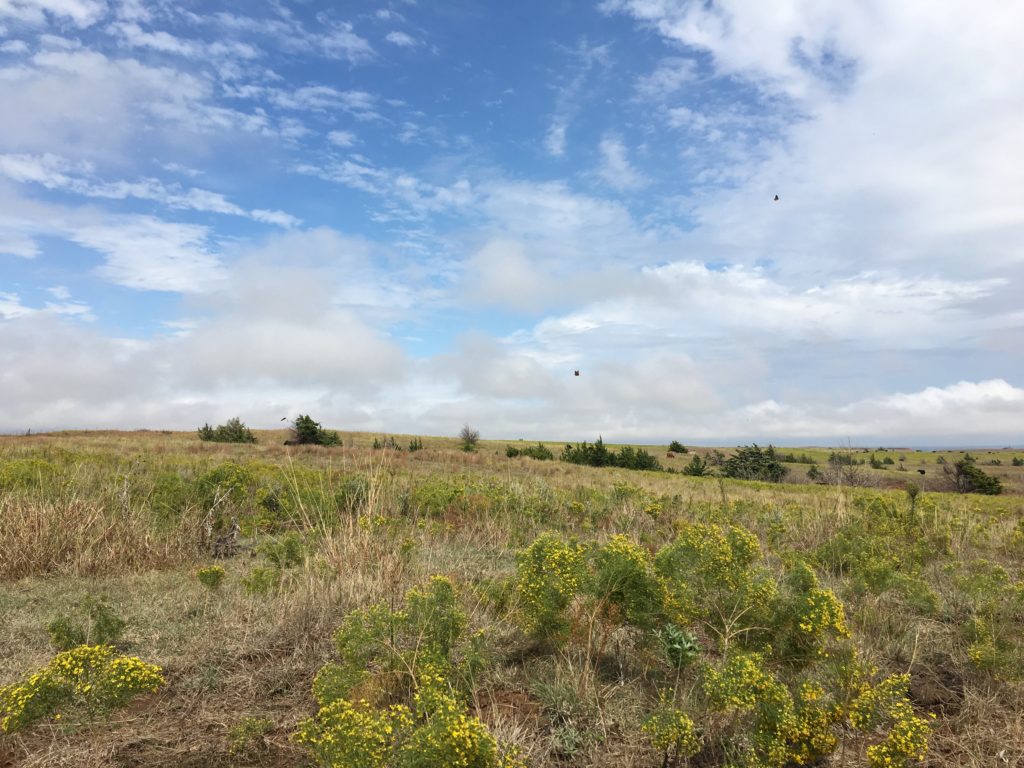
Monarch butterflies have returned to the ranch after fire was reintroduced. Photo: Brianna Randall
Water and Partnerships Makes the Ranch Go Round
“The limiting factor is always water,” says Blew, referring to the general challenge of ranching in the Kansas Gyp Hills.
The Nichols ranch is lucky enough to have three creeks running through it, which now flow consistently after the wildfire and targeted redcedar eradication. The NRCS-provided technical expertise has also helped the Blews improve ranch management.
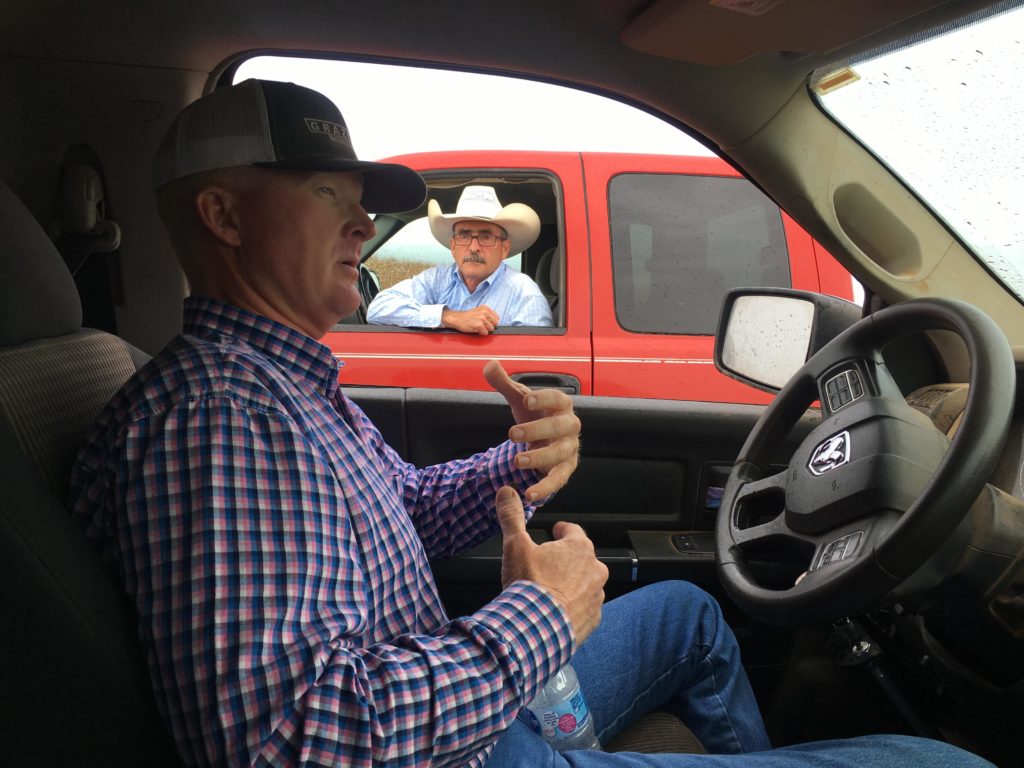
Russell Blew (front) talks with Carl Jorboe of the NRCS about the Nichols Ranch water systems. Together, they’ve installed solar-powered water systems across the ranch. Photo: Brianna Randall
Blew also worked with NRCS range expert Dusty Tacha to set up a rotational grazing system of multiple contiguous pastures that helps him improve the condition of the range and also increase the number of cattle the ranch can support.
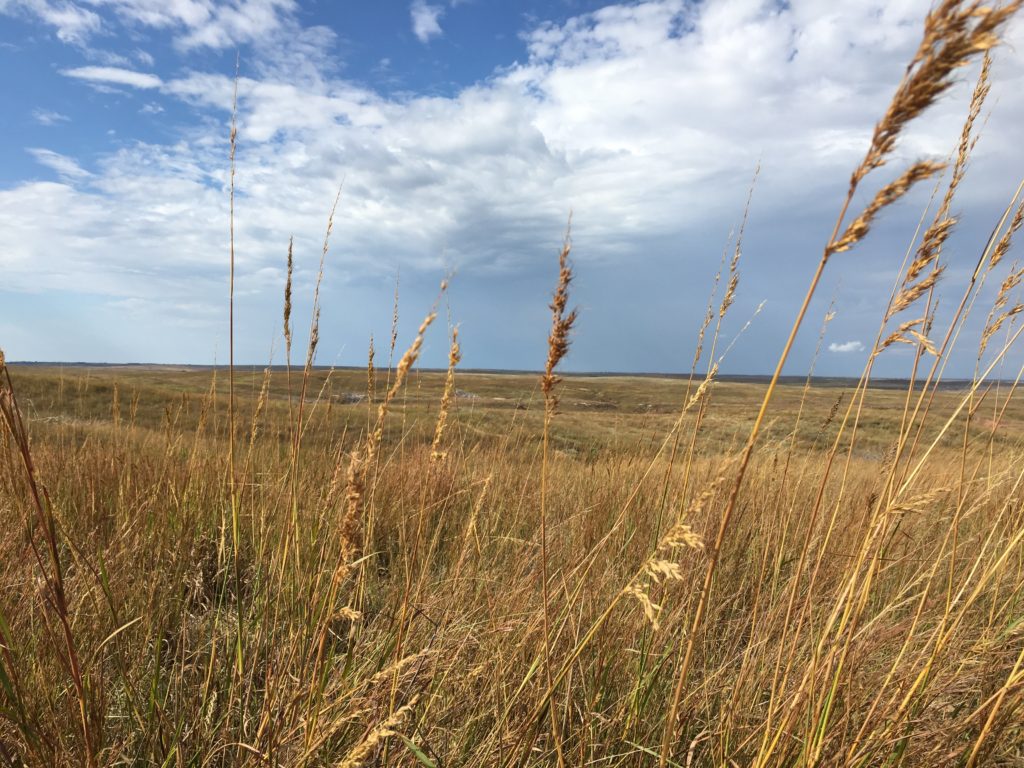
Healthy grasses are the foundation of any ranch. By partnering with NRCS and other organizations, the Nichols Ranch has increased its carrying capacity while improving habitat for wildlife. Photo: Brianna Randall
“I’m extremely happy that we’ve been able to put this range back into good health,” says Blew. “We want the next generation to be able to graze this land, so we’re managing for the long-term.”
Read the full story from BEEF Magazine here.


